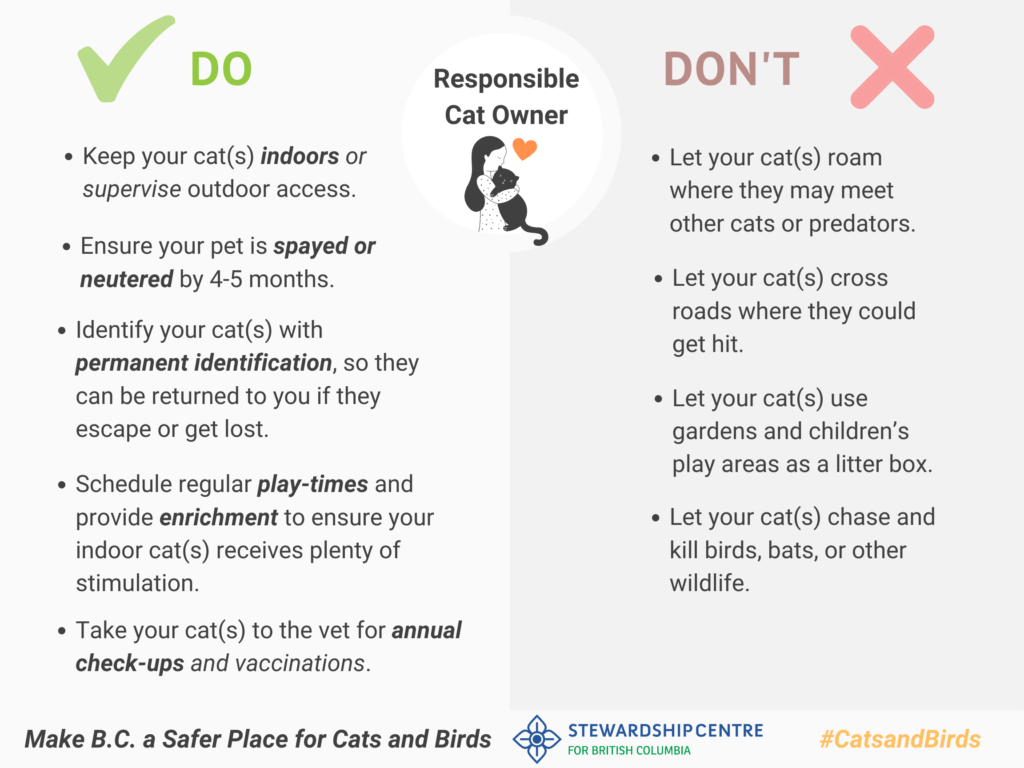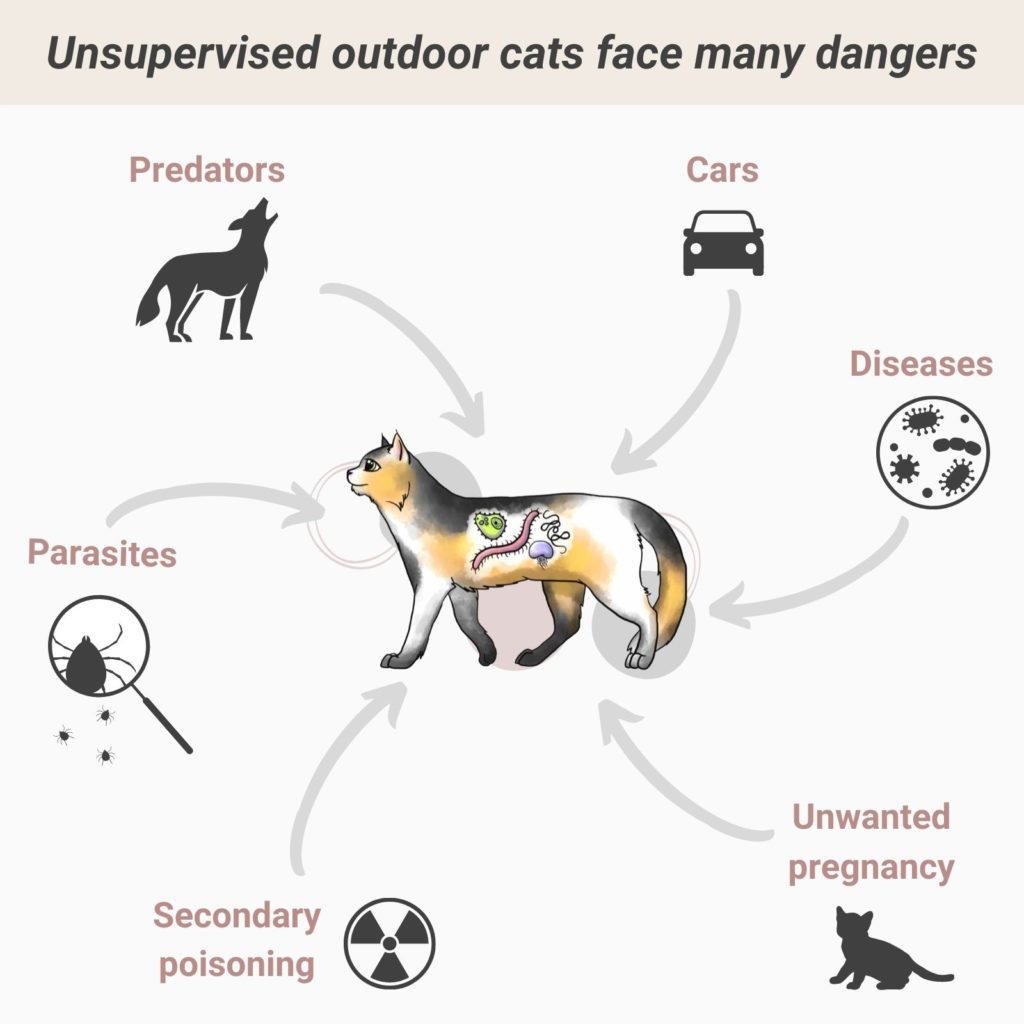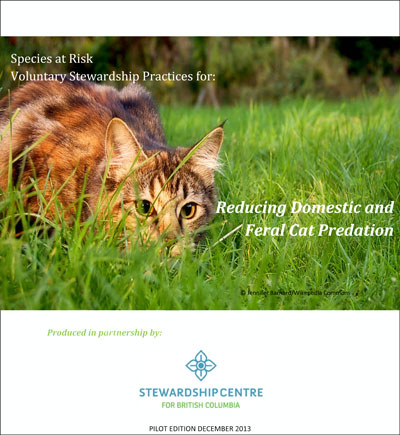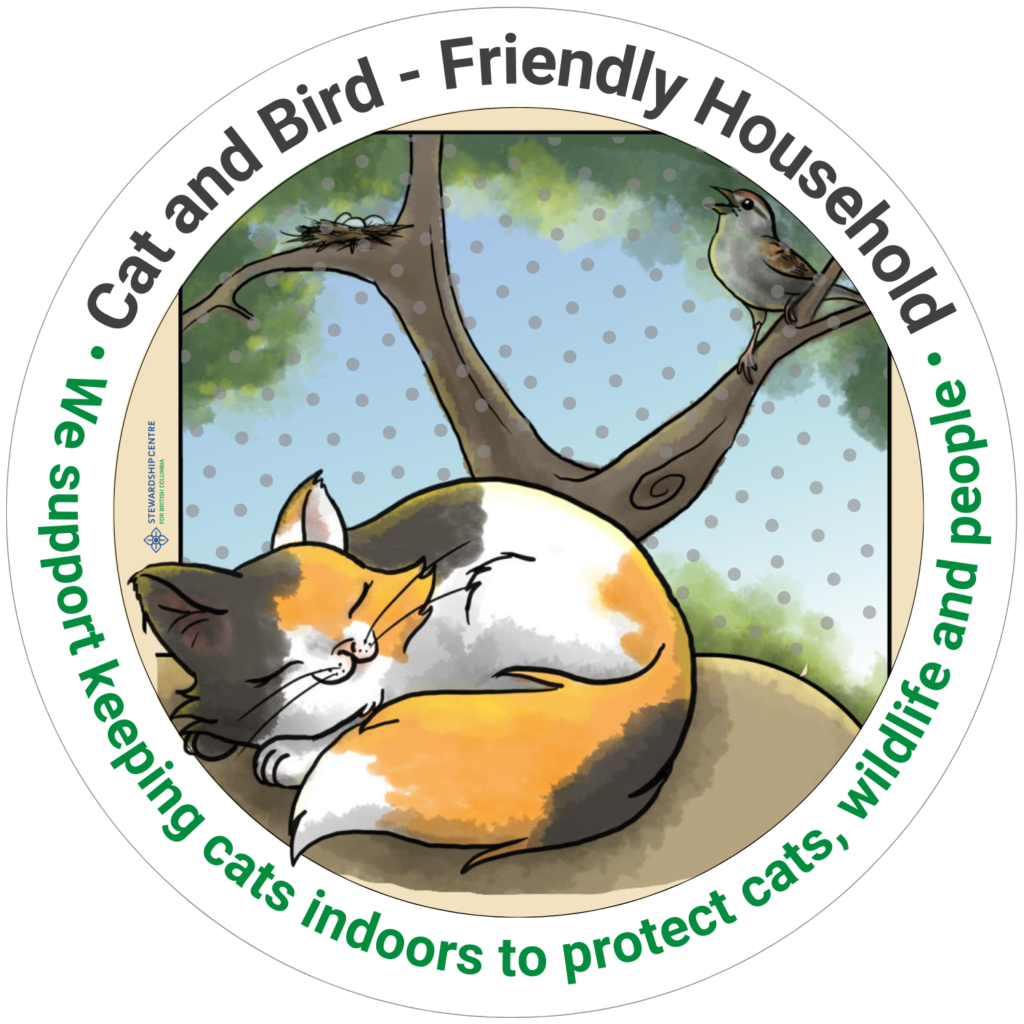Cats and Birds | For Cat Owners
Make your cat’s safety a priority.
Unsupervised cats face many dangers outdoors and pose risks to other animals and people. When you welcome a cat into your home, its health and safety become your responsibility.

Cats are an introduced species
The house cat was domesticated from the wildcat, Felis catus, likely to help control rodents during the rise of agriculture. Although cats have become one of the world’s most common pets, their hunting instincts are very much intact. Even well-fed cats like to hunt and range away from home. We might think of cats as being able to look after themselves but it is easy to forget that cats are not wild animals.
Why is the outdoors dangerous to cats?
Outdoor cats face a number of dangers causing injuries, trauma and even death. Not only your outdoor cats can get lost or engage in a cat fight, they are also at risk of being attacked by coyotes or hit by cars.

Cars
Road mortality is a major issue for all animals, including cats. With the density and the spread of roads expanding exponentially throughout the world, animals have fewer areas that are safe for moving around.
Ask yourself, have you ever noticed car-hit wildlife while driving? Unfortunately, there is little that can be done to protect animals from collisions with vehicles. Some mitigating measures include fences, over- and underpasses built for wildlife; however, these methods are expensive and not always reliable.
The good news is you can protect your pets by keeping them safe at home or supervising them while outside to make sure they don’t run away!
Predators
Coyotes are smart, fast and opportunistic predators. Their variable diet includes mice, rats, rabbits, squirrels, other small mammals and even pets. Thus, unsupervised outdoor cats in urban and rural environments are prone to predation by coyotes, especially from dusk to dawn when coyotes are actively hunting.
Diseases, toxins and poison
Roaming cats can bring home diseases and parasites that are picked up from other cats, caught and eaten wildlife, and from the soil. Fleas and ringworm are unpleasant but diseases such as feline leukemia are life-threatening to your pet.
Cat scratch disease, rabies and toxoplasmosis are examples of serious diseases and intestinal parasites which can be transferred from cats to humans.
For more information about zoonotic diseases carried by cats, visit Cornell Feline Health Centre‘s page and Cats and Diseases page by American Bird Conservancy.
Pesticides, rodenticides, insecticides, industrial and household chemicals (such as antifreeze) are all examples of toxins that can poison your cat. When ingested, toxic plants (like lilies) that are widely planted in urban and suburban areas, can also cause serious health problems for outdoor cats.
Together, let’s make BC a safer place for Cats and Birds!
If you are not ready to transition your cat to an indoor lifestyle, consider leash-training your cat, using a cat bib or building an outdoor enclosure such as a catio! For more ideas, visit our Happy Cat Stories gallery and share your story with us!
Follow our @SCBC.CatsandBirds Facebook page and download our free resources for cat owners.






